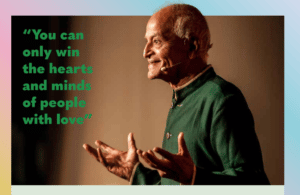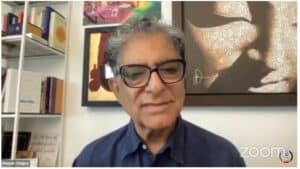Meditation Magazine: Racial injustice can make us feel justifiably angry. That anger can help drive us to take action, but at the same time, it can also be a double-edged sword. As a meditator and racial justice advocate, how do you walk that line, and work with the anger that arises?
Zuri Adele: Whoo! Yeah.
I’m an Aries, I got the fire! Everything I feel, whether I’m in love, or I’m angry, whatever it is, I feel like I’m going to feel like that forever. Like in that moment, I’m like, “This is the feeling that will last forever.” So that is something specific that I’ve really needed to work on. But it’s a gift too, as a performing artist, to feel things in such a real way.
I’ve learned that containment, and the emotional-spiritual martial arts, is a practice in itself. Two specific activities that help me work with my anger in a positive way are journaling and movement.
JOURNALING
Journaling is really helpful for me.
Writing out my feelings before sending a message or posting something on social media has helped me.
Even if it’s just a bullet-point list. It doesn’t have to be cohesive, in the way where somebody else would need to read or understand it.
I just write out my feelings without judgment, and maybe address it to the person I know I’m going to speak to.
And then I let it sit for however long I can. That may be a minute, it may be an hour, it may be days, it may be weeks. But letting it sit, and reading it back, and sitting with it, helps me to make sure that I would say the same thing once that emotion passes. Or to see if I wouldn’t! Or to see if some action has taken place in the meantime [that would change how I should respond].
In the meantime, it really helps me to know that: “Okay. I was feeling all of this. It’s all valid. And maybe there are more grounded ways, more compassionate ways, and more beneficial ways to all parties, for me to express this.”
MOVEMENT PRACTICES
I feel things with my body.
Whether it’s anxiety, anger, love, or lust… I feel those things from head to toe.
And so boxing, or moving my body through a yoga practice, or going for a walk – anything where I move my body – that helps me strategize. It could just be walking around the house, watering the plants. Getting into motion helps me allow my feelings and thoughts to flow.
So I find journaling and movement to be two of the best ways to find that line, [for how to work with anger in a positive way].
Our anger is so appropriate, and so valid, and it is most effective when we express it from the place of Unconditional Love, as best as we can.
…for ourselves first, which is that journaling practice. And then to the person receiving it.
Because there is a common goal. Even with the people who we think think the most differently from us, there’s a common goal that we can find. We can completely disagree on how to get there. We can even disagree that our goals are common. But if you really get to the root, the goal is common.
So, allowing myself to sift through my emotions around [racial injustice], and not to water it down, or gaslight myself either, helps me to pull out: “What’s really true?”
Taking that time requires patience with ourselves.
We were talking earlier [in this interview] about not rocking the boat. We don’t want to keep people waiting! We’re told, especially as women, that we need to give what is asked of us, so that we can continue to be desirable, and easy to work with, and all of that.
So being patient with ourselves enough to sift through our emotions is such a huge practice in terms of finding that line and balance.

To get this issue (and also get 4 more issues in your first year), don’t forget to subscribe! Digital mag | print magazine!














